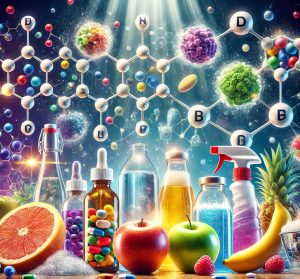Animal husbandry is a vital agricultural practice focused on breeding and managing livestock to optimize the quality and quantity of animal-based food products, such as milk, meat, eggs, and wool. It plays a crucial role in food security and economic stability, especially in rural areas, where it often supports the livelihoods of farming communities. With the world’s growing population and increasing demand for animal-based food products, efficient and sustainable animal husbandry strategies are essential for enhancing food production. Below, we’ll explore various strategies in animal husbandry that contribute to improved food production.
1. Selective Breeding and Genetic Improvement
Selective breeding involves choosing animals with desirable traits to reproduce, thereby passing on those traits to the next generation. This can result in animals with higher yields of milk, eggs, meat, or wool. Key genetic improvement strategies include:
- Crossbreeding: Mixing breeds with different traits, such as disease resistance or rapid growth rates, to produce animals that excel in multiple areas.
- Artificial Insemination (AI): A widely used technique allowing selective breeding without the need for close proximity of animals. AI is especially useful in maintaining and enhancing genetic traits across large distances.
- Genetic Engineering and CRISPR Technology: In advanced scenarios, genetic engineering can enhance specific traits, such as muscle growth in cattle or egg production in poultry, which directly improves food output.
2. Optimized Feeding Programs
Nutritional management is essential in animal husbandry, as proper feeding directly impacts animal health and productivity. Strategies include:
- Formulated Feed: Using feed that is specifically tailored to meet the nutritional needs of different species and growth stages, resulting in better growth rates and healthier animals.
- Supplementation: Adding vitamins, minerals, and probiotics to feed can prevent deficiencies and support immune function, leading to higher productivity and better-quality products.
- Silage and Forage Management: For ruminants like cows and sheep, silage (preserved forage) provides nutrition even in off-seasons. High-quality forage improves milk and meat production and is more cost-effective than commercial feed.
- Precision Feeding: This approach uses technology to adjust feed based on the individual needs of each animal, reducing waste and ensuring animals are not over- or underfed.
3. Disease Prevention and Health Management
Preventing disease is critical to sustaining high levels of food production. Common disease-prevention strategies include:
- Vaccination Programs: Regular vaccinations reduce the risk of widespread infections, which can significantly impact livestock production.
- Biosecurity Measures: Controlling the movement of animals, people, and equipment can prevent the introduction and spread of diseases. Isolation and quarantine are often used as part of biosecurity protocols.
- Antimicrobial Management: Proper and restricted use of antibiotics can prevent bacterial infections without promoting antibiotic resistance, which is a growing concern.
- Regular Health Checkups: Routine veterinary checkups and screenings for common diseases help in early diagnosis and treatment, preventing severe outbreaks.
4. Improved Housing and Farm Management Systems
The environment in which animals are kept can significantly impact their productivity and health. Housing improvements and farm management systems include:
- Controlled Environment Systems: Temperature control, ventilation, and humidity regulation prevent stress in animals, which can directly impact their growth and production rates.
- Free-Range and Pasture-Based Systems: In contrast to confined systems, free-range systems allow animals to graze naturally, leading to healthier animals and higher-quality food products, especially in poultry and dairy farming.
- Automated Milking and Feeding Systems: Automation reduces labor costs and increases productivity, especially on large dairy farms where milking can be time-intensive. Automatic feeders also ensure that animals receive consistent nutrition.
- Waste Management: Proper handling of animal waste helps reduce the spread of disease and maintains a clean environment, supporting animal health and preventing contamination of food products.
5. Reproductive Management
Effective reproductive management in animal husbandry ensures higher birth rates and the health of newborn animals. This is achieved through:
- Estrous Synchronization: Synchronizing the reproductive cycles of female animals allows for planned breeding, maximizing the efficiency of reproduction efforts and managing breeding schedules.
- Hormonal Treatments: Using hormones can help induce or delay estrous cycles to synchronize breeding, ensuring consistent production across the year.
- Embryo Transfer (ET): This involves implanting embryos into surrogate animals, which increases the reproduction rate of genetically superior animals, especially useful in species with long gestation periods, like cattle.
6. Sustainable and Ethical Practices
Sustainability and ethical animal husbandry practices are increasingly important in modern agriculture. Sustainable practices not only contribute to environmental conservation but also improve long-term productivity. These practices include:
- Rotational Grazing: Moving animals between pastures allows the land to recover, preventing overgrazing and promoting long-term soil fertility.
- Organic Farming: Avoiding synthetic chemicals in feed, along with organic waste management, improves the sustainability of animal husbandry while often producing higher-quality food products.
- Animal Welfare Practices: Ethical treatment, which includes providing space, reducing stress, and allowing natural behaviors, improves animal health, reducing mortality and enhancing productivity.
- Low-Carbon Emission Techniques: Strategies like feed additives that reduce methane emissions and waste-to-energy systems that convert animal waste to biogas contribute to climate-friendly production.
7. Technological Integration and Precision Farming
Technology plays a critical role in modern animal husbandry, enabling precise management of animals and resources. Examples include:
- Data-Driven Decision Making: The use of sensors, IoT devices, and data analytics allows farmers to monitor health, reproductive status, and nutrition, optimizing each animal’s productivity.
- Wearable Sensors: These are attached to animals to track their health, movement, and vital signs, providing early warning signs for health issues.
- Robotic Farming: Automation in feeding, cleaning, and monitoring animal enclosures helps reduce human labor and increases the accuracy of tasks. For example, robotic milkers are becoming common on large dairy farms.
- Drones for Pasture Management: Drones help in monitoring large grazing areas and managing livestock movement, making it easier for farmers to ensure that animals are not overgrazing specific areas.
8. Integrated Livestock-Crop Farming Systems
Combining animal and crop farming helps make efficient use of resources, leading to higher productivity and sustainability. Key benefits include:
- Nutrient Recycling: Animal waste can be used as manure for crops, which enhances soil fertility and reduces the need for chemical fertilizers.
- Diversification of Farm Income: This strategy reduces the risk for farmers by providing multiple income sources and supporting greater resilience to market fluctuations.
- Water Resource Management: By integrating livestock and crops, farms can use water more effectively, as crop residues can be used as fodder, reducing reliance on external feed sources.
9. Adoption of Digital Record-Keeping and Management Tools
Modern livestock management systems benefit greatly from digital record-keeping. Software tools help farmers keep detailed records, including breeding, health history, and production data. Digital tools provide:
- Improved Decision-Making: Detailed data allows for more informed decisions regarding breeding, feeding, and veterinary care.
- Traceability: Keeping track of each animal’s history enhances traceability, which is crucial in food safety and quality control.
- Regulatory Compliance: Detailed records help farmers stay compliant with national and international standards, which is essential for exporting animal products.
10. Government and Institutional Support
The role of governments and institutions in promoting efficient animal husbandry practices cannot be overstated. Through policies, training, and financial support, governments can help farmers adopt modern and sustainable practices. Key areas include:
- Subsidies and Financial Aid: Providing financial assistance for infrastructure, feed, and health management can help farmers invest in quality inputs.
- Training Programs: Educating farmers on best practices in animal husbandry improves efficiency and productivity.
- Research and Development: Funding research into animal genetics, disease control, and sustainable practices can support the growth of animal husbandry.
- Access to Markets: Governments can provide marketing and export opportunities, enabling farmers to get better prices for their products.
10 Questions based on the strategies for enhancing food production through animal husbandry, along with concise Answers:
1. What is selective breeding, and how does it improve food production?
- Answer: Selective breeding involves choosing animals with desirable traits for reproduction. It improves food production by enhancing specific traits, such as higher milk yield in cows or faster growth rates in poultry, which leads to more efficient production of animal-based foods.
2. How do optimized feeding programs contribute to better productivity in animal husbandry?
- Answer: Optimized feeding programs provide animals with nutrition that is tailored to their specific needs, improving growth, health, and productivity. Precision feeding and formulated feed help reduce waste and ensure that animals receive the right nutrients for optimal production.
3. Why are disease prevention and health management important in animal husbandry?
- Answer: Disease prevention and health management are critical because diseases can drastically reduce productivity, lead to animal deaths, and lower food quality. Strategies like vaccinations, biosecurity, and regular checkups keep animals healthy, enhancing overall food production.
4. What role does improved housing play in animal husbandry?
- Answer: Improved housing provides animals with a comfortable, stress-free environment, which directly affects their health and productivity. Controlled environments, adequate space, and proper ventilation contribute to better growth rates, higher yield, and better-quality products.
5. What is estrous synchronization, and how does it aid reproductive management?
- Answer: Estrous synchronization involves aligning the reproductive cycles of female animals to plan breeding efficiently. This strategy ensures a consistent supply of young animals, stabilizes production cycles, and supports optimal herd growth and productivity.
6. How does rotational grazing support sustainable animal husbandry?
- Answer: Rotational grazing involves moving animals between pastures, allowing grasslands to recover and preventing overgrazing. This sustainable practice improves soil health, provides better nutrition for animals, and supports long-term productivity.
7. What technological tools are used in precision farming for animal husbandry?
- Answer: Precision farming tools include sensors, IoT devices, wearable health monitors, and data analytics. These technologies allow farmers to monitor animal health, adjust feed accurately, and improve management, all contributing to enhanced productivity.
8. How does integrating livestock and crop farming benefit food production?
- Answer: Integrated livestock-crop farming uses animal waste as natural fertilizer for crops and crop residues as feed, which improves resource efficiency. This approach reduces reliance on external inputs, supports sustainable farming, and enhances overall productivity.
9. Why is digital record-keeping important in modern animal husbandry?
- Answer: Digital record-keeping allows farmers to track animals’ health, breeding history, and production data accurately. This improves decision-making, ensures compliance with food safety standards, and enhances traceability, all of which contribute to better management and productivity.
10. What types of support can governments provide to enhance animal husbandry practices?
- Answer: Governments can support animal husbandry through subsidies, training programs, research funding, and market access. These measures help farmers invest in better infrastructure, adopt modern techniques, and access larger markets, all of which boost productivity and food security.






